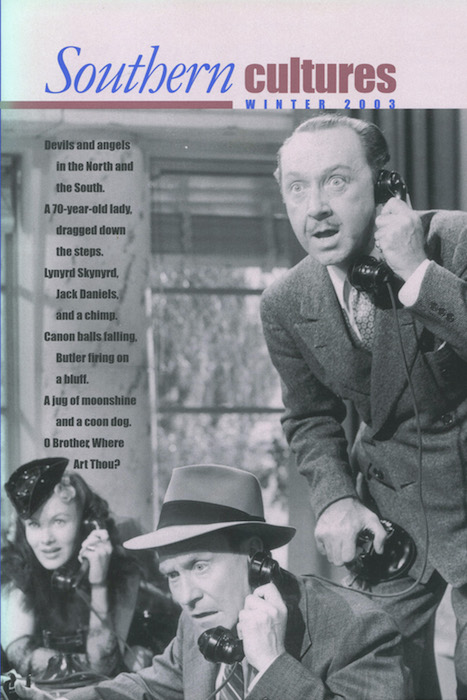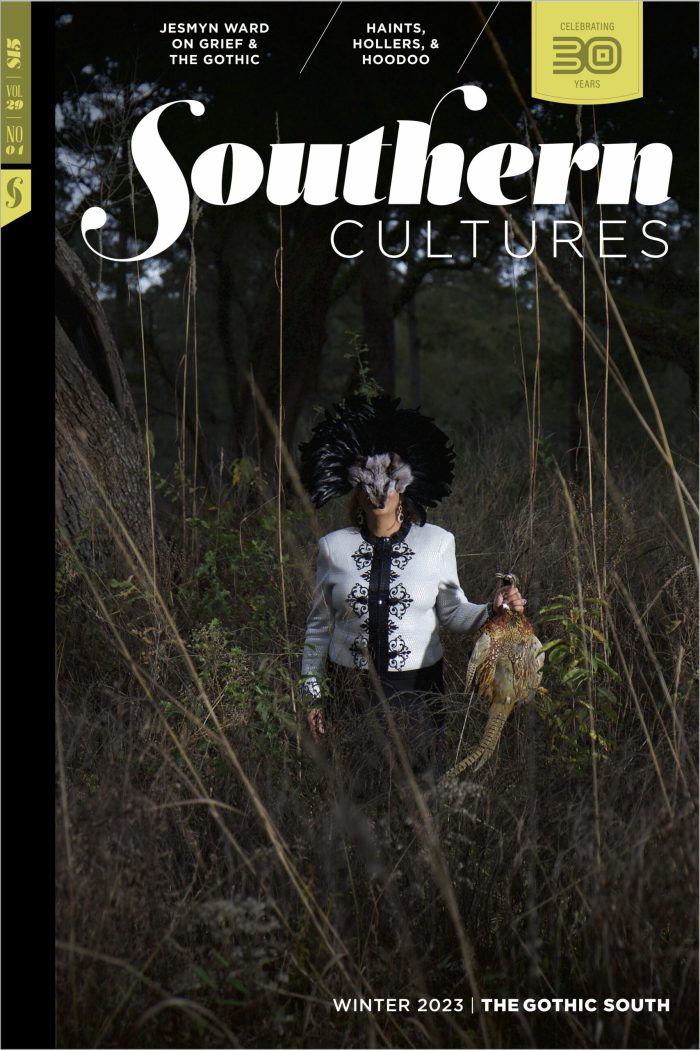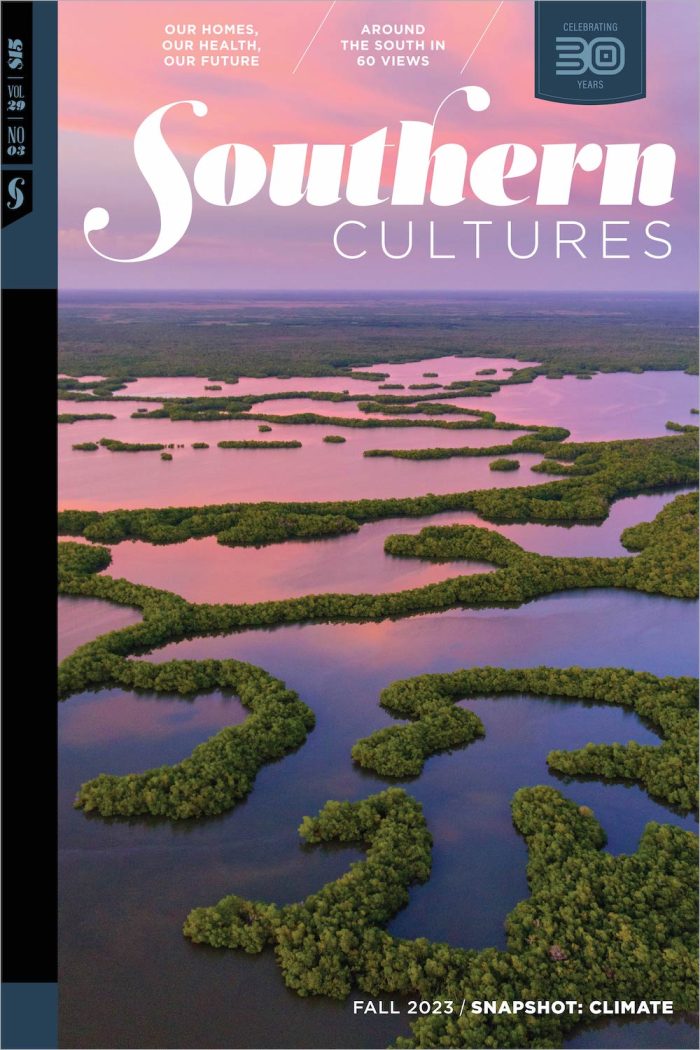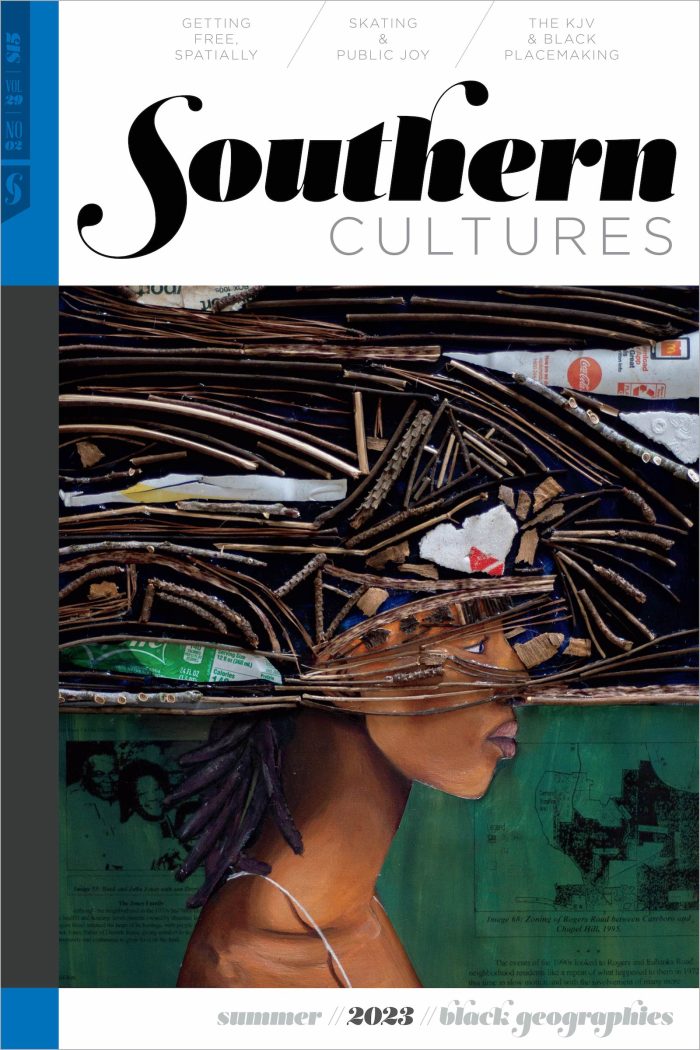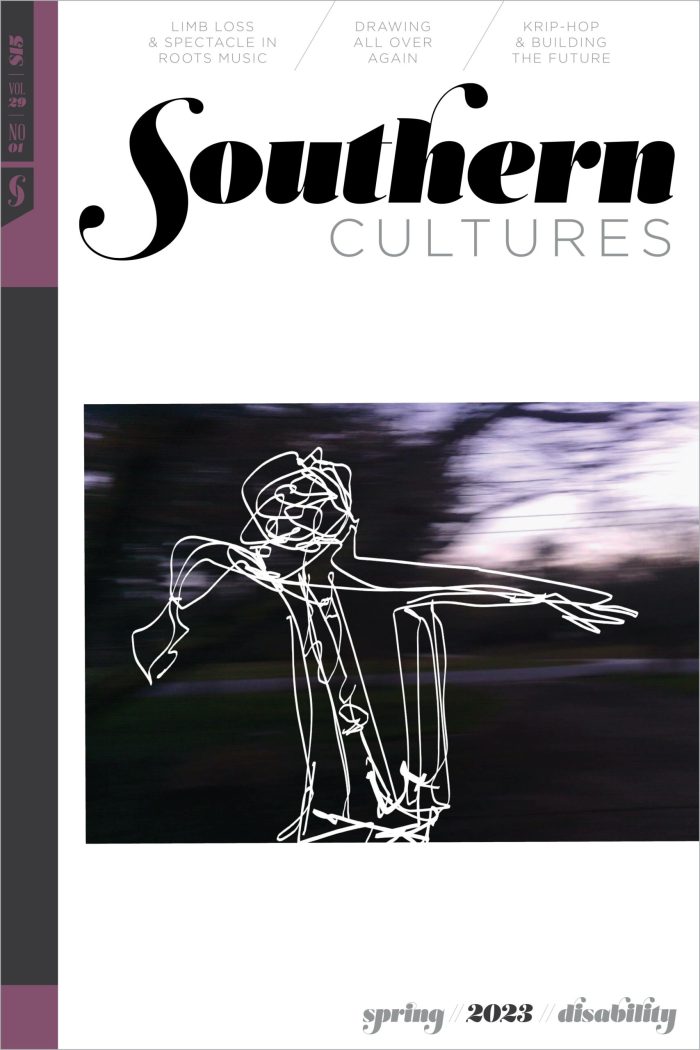BUY ACCESS
by Harry L. Watson
“Would the newfangled South have its faith in ancient treasure to fall back on?” As cultural motifs go, sin and salvation are about as close to the cream of the southern crop as you can get. It’s hard to think of a time when at least some southerners did not feel awash in one and »
History, Race, and Myth in O Brother, Where Art Thou?
by Hugh Ruppersburg
“It’s a southern tall tale, the story of a confidence man, of a treasure hunt, of a man trying to prove himself to his children and estranged wife, of a political campaign, of three buddies on the road, of the quest for home.” I was born in 1950 and so did not live through and »
BUY ACCESS
Imagining Identity in Appalachia
by Katie Algeo
“Movies, television, comic strips, and postcards feature the lanky, gun-toting, grizzle-bearded man with a jug of moonshine in one hand and a coon dog at his feet.” Certain Appalachian stereotypes were widely accepted by the early twentieth century, yet most people in the United States had never visited the region. Although information about the area »
BUY ACCESS
by Phillip Goetzinger
Before taking these photographs I had read an essay on how several decades ago the Atchafalaya and Mississippi rivers bent close enough to one another in Louisiana that they united. The Atchafalaya, being the lower of the two, took on the bulk of the flow, a distressing development for life on the Mississippi in lower »
BUY ACCESS
by John Beecher
“. . . dragging that 70-year-old white lady down the courthouse steps with her head going bam on every step . . .” And so this cat he was from the GBI that’s the cracker FBI kept feeling up the chick’s legs with his electric cattle prod and making them wiggle and holler
BUY ACCESS
The Fight for Racial Equality in the North Carolina Agricultural Extension Service
by Kieran Walsh Taylor,
P. E. Bazemore
“You were there at the U.S. Supreme Court. Your name is called in that body of people. It was just frightening.” For the better part of twenty years, county extension agent P. E. Bazemore spearheaded a lawsuit charging the North Carolina Agricultural Extension Service with discriminating against its African American county agents in hiring, pay, »
BUY ACCESS
Sin, Salvation, and Southern Rock
by J. Michael Butler
“The band delighted in sharing their bottle of Jack Daniels with a chimpanzee.” In 1971 the five-member rock-and-roll group Black Oak Arkansas released their debut album. The songs on the record illuminated themes addressed by Black Oak and the larger “southern rock movement.” Most southern rock lyrics glorified such stereotypically male values as fighting, gambling, »
BUY ACCESS
A Memoir of the 1850s and 1860s
by Angela Potter,
Virginia Fendley Dickinson
“Butler was already firing on Drewry’s Bluff a few miles from Richmond, and the cannon balls were falling in every direction.” A converted miner’s cottage within Dartmoor National Park in south-west England is an unlikely spot to find a huge cache of nineteenth- and twentieth-century Virginian letters, diaries, and photographs, but nevertheless they have found »
BUY ACCESS
by Stephen J. Whitfield
University of Virginia Press, 2002. Born near Chicago in 1941, Emmett Till was murdered in the Mississippi Delta on August 28, 1955, and became the best-known victim of racial violence in American history. Visiting relatives shortly before he would have become an eighth grader, Till entered a store in Leflore County and as a prank »
BUY ACCESS
by Susanna Delfino
University of Georgia Press, 2002. The late twentieth century witnessed a renewed scholarly interest in the issue of nationalism, generated not only by the resurgence of ethnic and religious conflicts in many parts of the world, but also by the many problems posed by the increasingly multiethnic and multiracial character of western European societies. During »
BUY ACCESS
by Daniel S. Pierce
Duke University Press, 2002. Sociologist Jim Wright has taken on a two-fold task in Fixin’ To Git: to make a sociological study of NASCAR’s Winston Cup Series and to reflect on his firsthand experiences in attending six races during the 1999 season—what Wright refers to as his “Fixin’ To Git Road Tour.” As such, it contains »
